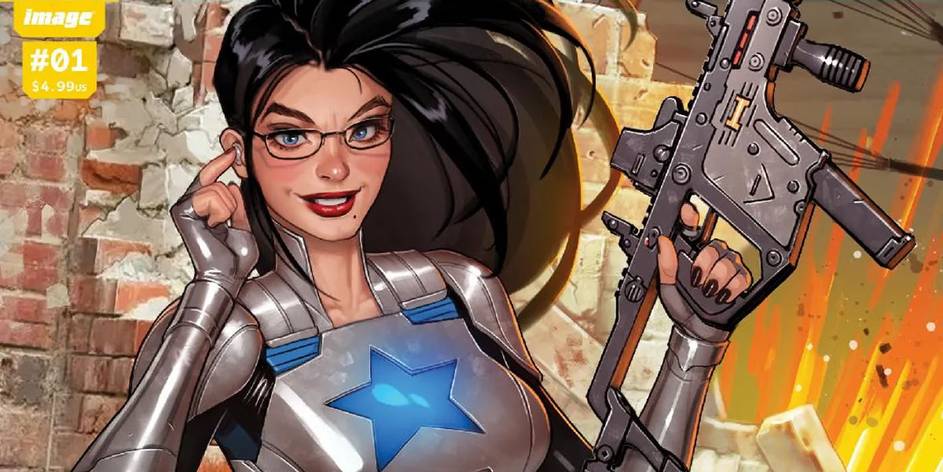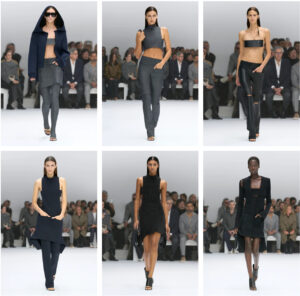Skybound’s upcoming G.I. Joe series has been creating a buzz in the comic book community, and for good reason. Renowned artist David Nakayama is lending his vibrant and highly detailed style to a special set of connecting covers, focusing exclusively on the women of G.I. Joe and Cobra. The first of these four covers is set to go on sale in November, capturing the powerful essence of these iconic characters as they engage in battle. This unique approach places a spotlight on the formidable female forces within the G.I. Joe universe, emphasizing their integral roles in the ongoing conflict between G.I. Joe and Cobra.
Nakayama’s artwork has always been celebrated for its bold use of color, dynamic compositions, and the ability to infuse characters with an energy that practically leaps off the page. His work on the G.I. Joe series is no exception, blending nostalgia with a modern, stylized touch. But beyond the aesthetics, these covers also serve as a testament to the evolving representation of women in comics—moving away from mere side characters or support roles to stand as fully-realized figures of power and influence.
A Closer Look at Nakayama’s Style
David Nakayama’s style has become synonymous with eye-catching visuals and sleek design. His mastery of composition and knack for capturing the essence of his subjects make him an ideal fit for a project that seeks to highlight the women of G.I. Joe and Cobra in a bold new light. Each cover in this series promises to be packed with details that both longtime fans and new readers will appreciate.
Nakayama’s previous work includes contributions to Marvel’s X-Men and Spider-Man titles, where his ability to balance action, emotion, and character-driven storytelling has shone through. His technique often incorporates a strong sense of movement, with characters posed in mid-action, muscles tensed, and eyes locked onto unseen foes. This fluidity and dynamism are perfect for conveying the heated skirmishes between G.I. Joe and Cobra, and his art style will likely heighten the drama and intensity of these conflicts.
One of the key elements to look for in this series is the way Nakayama captures the unique personalities of each character through posture, facial expressions, and even the surrounding background elements. In this new G.I. Joe cover set, every character is distinct, their personalities on full display—from the stoic determination of Scarlett to the calculating menace of the Baroness. Nakayama has an uncanny ability to layer his artwork with subtle cues that speak volumes about each character’s backstory and motivations.
The Importance of Representation in Comics
The decision to feature an all-female cast for this series of covers is more than just a design choice—it’s a statement about representation in comics. For too long, women in superhero and action comics were relegated to supporting roles or used merely as plot devices. Even in properties as iconic as G.I. Joe, the male characters often overshadowed their female counterparts, who were rarely given the spotlight they deserved. Nakayama’s work is part of a broader trend within the industry to correct this imbalance and bring female characters to the forefront, showcasing their strength, intelligence, and leadership.
Each cover in Nakayama’s series serves as a celebration of these characters, presenting them not just as warriors, but as leaders and strategists. It’s a powerful reminder that the world of G.I. Joe is populated with strong, capable women who are every bit as integral to the story as their male counterparts. In a genre that thrives on action and conflict, these characters are shown as being at the heart of the battle, driving the narrative forward with their own agency and skill.
G.I. Joe and Cobra: An Ever-Evolving Conflict
The G.I. Joe universe has always been defined by its rich array of characters and the ongoing conflict between the elite G.I. Joe team and the ruthless Cobra organization. The series, which began as a line of military-themed action figures, quickly evolved into a sprawling narrative that includes comic books, animated series, and films. Throughout its history, both sides have included a diverse cast of characters, each with their own distinct skills and backstories. However, despite the presence of strong female characters like Lady Jaye, Scarlett, and the Baroness, it’s only in recent years that these characters have begun to receive the recognition they deserve.
Nakayama’s connecting covers provide a visual representation of the tension and rivalry between the two factions. The women of G.I. Joe and Cobra are portrayed as locked in a perpetual battle, their conflict as much about ideology and values as it is about military prowess. This series not only highlights the physical confrontations but also hints at the psychological warfare that takes place between these formidable women.
Each cover captures a moment of intensity—Scarlett aiming her crossbow with unerring focus, Baroness standing amid the smoke and debris of a recent skirmish, or Jinx poised with her katana, ready to strike. These images are more than just illustrations; they are snapshots of a larger narrative, one that invites readers to delve deeper into the motivations and histories of these characters.
Cover Art as Storytelling
The connecting nature of these covers is also a nod to the way comics function as a serialized art form. Just as each issue builds on the one before it, each cover in Nakayama’s series will link to the others, forming a panoramic view of the battlefield. This approach not only rewards collectors and longtime fans but also provides a sense of continuity and cohesion. Each cover can stand on its own, telling a story through its composition and character interactions, but together they form a much larger tableau that speaks to the overarching themes of the series.
The choice to have the covers connect is particularly significant in the context of the G.I. Joe universe. It serves as a visual metaphor for the interconnected nature of the characters’ lives and their ongoing struggles. The conflict between G.I. Joe and Cobra is not just a series of isolated skirmishes, but part of a larger tapestry of war and espionage. Nakayama’s artwork captures this sense of interconnection, showing how each character’s actions ripple through the broader narrative.
Anticipating the Release
The first cover in this series will be available in November, and fans are already speculating about which characters will be featured and how they will be portrayed. Given Nakayama’s track record, there’s little doubt that these covers will become sought-after collector’s items. The use of connecting covers also opens up possibilities for creative displays and showcases, as fans can arrange them to create a larger, unified image.
For collectors, these covers represent an opportunity to own a piece of comic book art that’s not only visually stunning but also historically significant. This series will likely be remembered as a turning point in the way female characters are represented within the G.I. Joe universe. By focusing on the women of G.I. Joe and Cobra, Skybound and Nakayama are acknowledging the vital role these characters play and giving them the spotlight they’ve long deserved.
Looking Ahead
The future of the G.I. Joe series looks brighter than ever, with Skybound’s new take on the franchise promising to deliver fresh narratives and dynamic visuals. Nakayama’s covers set the tone for what’s to come, suggesting a series that’s unafraid to tackle complex characters and storylines. Whether you’re a lifelong fan of G.I. Joe or a newcomer drawn in by the stunning cover art, there’s plenty to look forward to as the series unfolds.
Nakayama’s work on these covers is a reminder of the power of visual storytelling in comics. Each line, each color choice, and each composition element contribute to a larger narrative that speaks to the strength and resilience of these characters. It’s a fitting tribute to the women of G.I. Joe and Cobra—characters who have fought their way through decades of storytelling to stand as icons in their own right.
No comments yet.







